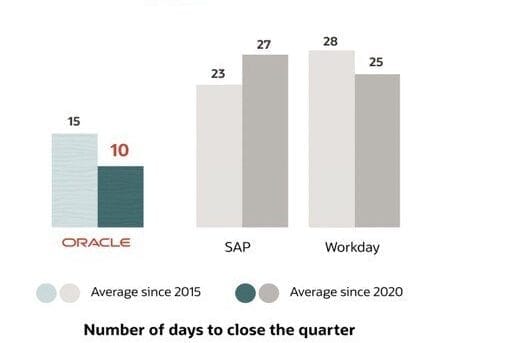Oracle: With data, less can be more
There is a tendency among application vendors like SAP and Workday to assume that it is better to integrate more data into financial applications. In fact, looking at data-driven innovation, you might think that more is better - the more data you have, the more you can analyze, and the smarter your business appears to be.

But what is the optimal amount of data for finance? Where do you store data that you don't necessarily need in your financial system? What types of analytics are useful? How much data do you need to benefit from data-driven innovation?
Let's go into the matter
In finance, a general ledger consists of at least these data elements:
- Company. This element represents a whole or logical part of a company, legal entity or organization.
- Accounts. This is where balances are recorded and financial information and reports are organized.
- Cost centers. This is a logical unit within an organization, such as a business unit, department or group.
Companies usually use more than just these three segments in their financial reports. Other examples of commonly used segments are project and product. Most companies use about six segments. For Oracle Cloud ERP, the key can have 30 segments of 240 characters each.
Oracle's General Ledger can also be created in a composite structure. This means that you have a structure of subledgers that may have some key data elements (such as cost centers or accounts) in common.
Each general ledger can have the following specific characteristics: Accounting Method, Cost Accounting, Granularity of Cost, and Costing Period. Updates are compound, which means that if you maintain the General Ledger, the sub-ledgers underneath can optionally inherit the updates from the General Ledger. This way you can have as many sub-ledgers as you want.
In contrast, SAP has introduced the so-called Universal Journal with S/4 Hana. SAP has expanded the number of segments that the Universal Journal can contain. S/4 now has a total of 999 segments. This means that you can store, for example, customers, sales campaigns or employee groups as properties in SAP Financials.
A financial accounting system with so many segments is called an overloaded general ledger ("thick general ledger"). It also means that it contains more data than you need from an accounting perspective. In contrast, a Thin General Ledger has enough data for financial reporting, while other data is stored elsewhere in the application suite.
Getting smarter with the right data
To better work with all the data in your organization, close your quarterly periods faster, and speed up the decision-making process, consider these steps:
- Use of Machine Learning (ML). The more data fed to intelligent agents, the more accurate they become. But that doesn't mean you have to move more data to finance. ML can learn from data anywhere in your enterprise applications. ML also learns from how people interact with data, so the solution can personalize the response.
- Use of real-time data from the source. You already have sales data in your customer experience applications, employee data in human capital management, supply chain data in supply chain management, and financial and planning data in ERP. You can interact with data in all of these applications using commonly understood business terms in their respective source systems without depending on IT.
- Data access directly in the source system. Keep industry-specific, detailed transaction data in the source system, for example, high-volume billing data in the telecommunications or insurance industry. Let a suitable solution like Oracle Fusion Cloud Accounting Hub harmonize the data and send the result to your financial system. Access the source directly if you need more details.





